If you discover a leak in your central heating system, your first instinct might be to schedule a boiler service. However, it’s important to note that a boiler service alone won’t solve the problem.
Although a Gas-Safe engineer can inspect your boiler components, they won’t have the necessary time and tools to address more complex issues within the system. It’s possible for your boiler to receive a clean bill of health, yet there could still be a significant leak in your central heating pipes.
To effectively and affordably deal with your leak, consider utilizing a Trace and Access service provided by a professional leak detection company. This service will ensure that the source of the leak is identified and addressed, offering a comprehensive solution to your central heating system issue.
To get to the bottom of this issue, you might need the assistance of a professional leak detection service. However, before we dive into how we can help you address your central heating pressure problems, let’s take a moment to understand why leaks occur and discuss a few steps you can try on your own to potentially solve the problem.
Leaking can be a common problem when it comes to maintaining the water pressure in your central heating system. The pressure is crucial in ensuring that heat reaches every corner of your home, but if it drops too low, your boiler will automatically switch off. This means no warmth and no hot water for you.
If you’re facing this issue, it’s advisable to seek the expertise of a professional leak detection service. They can help you identify and fix any leaks that may be causing the pressure drop. However, there are a few steps you can take on your own to attempt solving the problem before calling in the professionals.
By understanding the reasons behind leaks in your central heating system, you can better address the issue at hand. This will not only ensure a comfortable and warm living environment but also potentially save you from unnecessary expenses. So, let’s dive in and explore some possible solutions to your central heating pressure problems.
Let’s talk about the central heating pressure gauge. Almost all boilers have a nifty pressure gauge on the front. Some of them show off with hydraulic dials, while others opt for a sleek digital display. Ideally, when your heating is off, the pressure should be around 1 bar. But once you turn on the heat and the system warms up, you should be looking at a pressure of around 2 bar.
Now, there are a few finicky bits and bobs in your boiler that could potentially cause pressure problems. However, if your pressure reading is lower than what I just mentioned, it’s probably because you’ve got a leak somewhere or there’s a mischievous pocket of air hiding in your system. Sneaky, right?
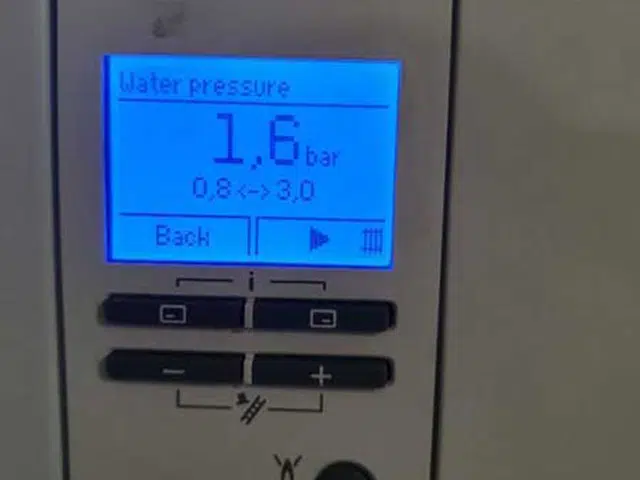
Leaking central heating pipes and a dropping boiler pressure may seem like minor inconveniences, but they can actually lead to extensive and costly damages if left unattended. The problem lies in the fact that your central heating system runs throughout your entire house, hidden beneath the floors, within the walls, and sometimes even in the loft. This means that water can leak in places that are not immediately noticeable, causing significant damage before any signs become visible.
Even a small and steady water drip can result in dampness within the structure of your home. If not addressed promptly, the cost of fixing these issues can skyrocket into the thousands, or even tens of thousands. It is crucial to act swiftly to prevent further complications and expenses.
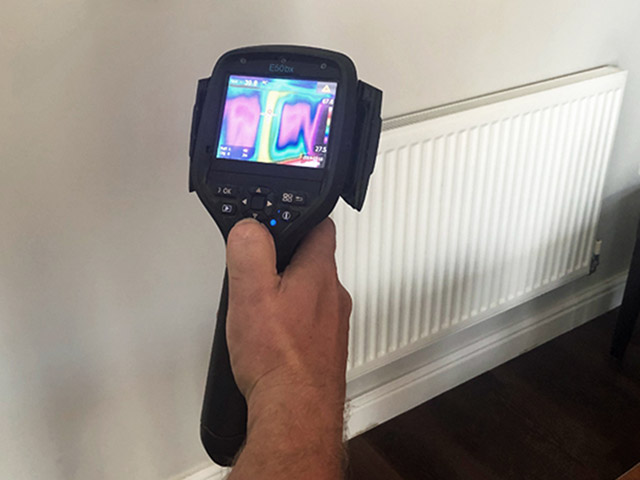
Air can be quite a nuisance in central heating systems. Why, you ask? Well, it’s because air can be compressed way too easily compared to water. So, when the pressure in the system starts to rise, the water compresses the air, causing your system pressure to drop once again.
But fear not, my friend, for there is a solution to this pesky problem. All you need to do is bleed your radiators. Yes, that’s right, just get rid of the air altogether. It’s actually quite simple, I promise.
To begin, you’ll need a trusty bleed key. Oh, and don’t forget to have a towel nearby, just in case. Now, with the help of the bleed key, gently release the radiator vent. And if you happen to have some trapped air in there, you’ll hear a satisfying hiss, just like when you let the air out of a bike or car tire. Exciting, isn’t it?
But wait, there’s more! Remember, there’s water in that radiator too, so as soon as the hissing stops, be prepared to tighten that vent back up. We wouldn’t want any water making an unexpected appearance, now would we?
Now, my dear reader, it’s important to repeat this process for each and every one of your radiators and towel rails. Yes, even the towel rails deserve some attention. Trust me, your heating system will thank you for it.
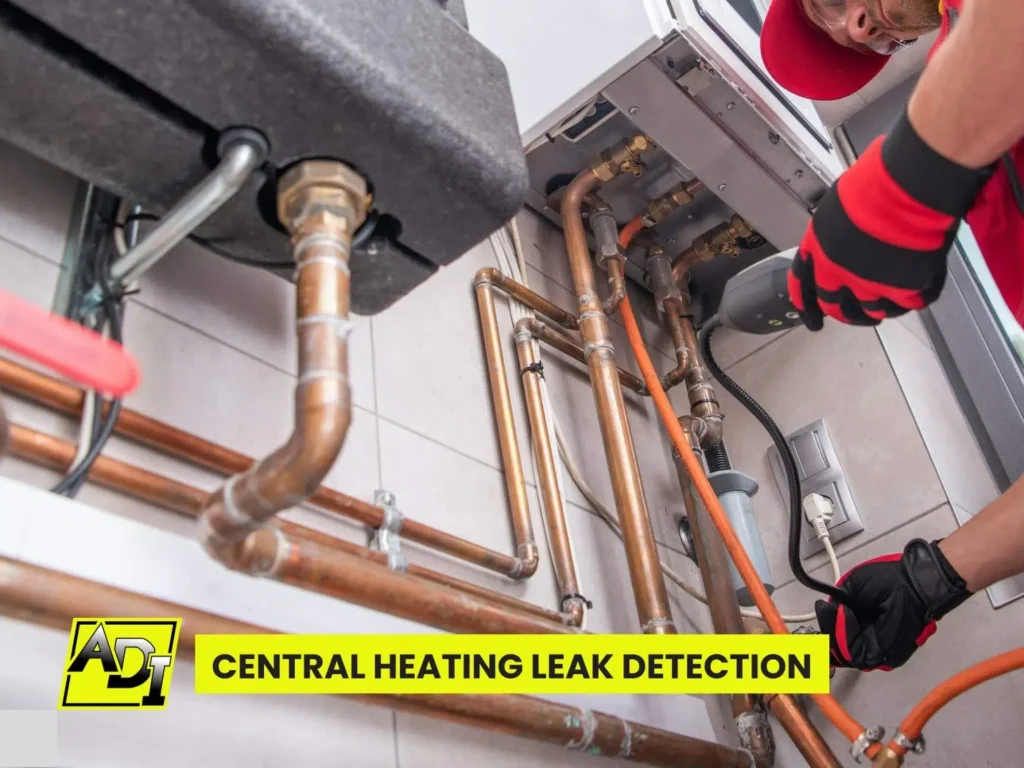
If you’ve successfully removed the air from your radiators, you may notice that the pressure in your boiler has dropped again. Don’t worry, though! You can easily top it up using the handy ‘filling loop’.
For most boilers, the filling loop is already a part of the system. However, in some cases, it may be an extra length of hose that needs to be securely attached to the pipework near the boiler. If you’re not sure about any step of the process, it’s always a good idea to refer to your boiler instructions or check the manufacturer’s website. They often have helpful videos that explain exactly what to do.
Usually, topping up the system fluid and pressure will require you to:
It’s vital that you only increase the pressure in your boiler if you’ve followed your manufacturer’s instructions and feel absolutely confident doing so. Overfilling a boiler can cause damage (and further leaks) – so be careful.
If you notice your boiler pressure dropping away straight after you’ve followed this procedure, you should get in touch with us as quickly as possible – as this would indicate a large leak that needs immediate attention.
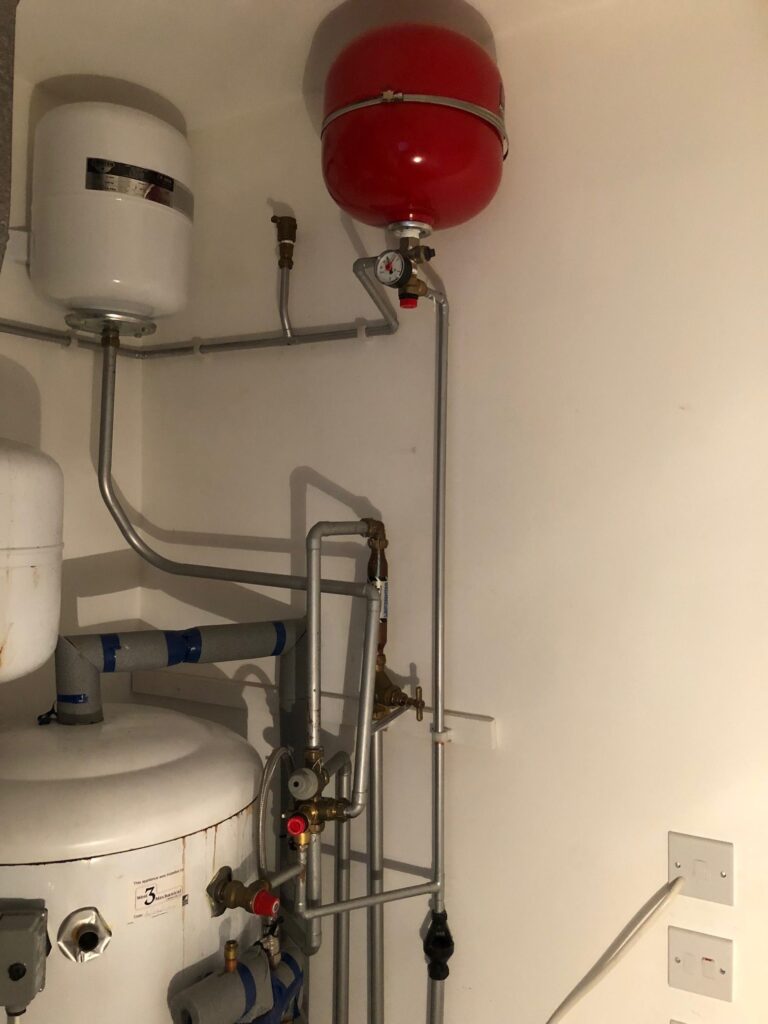
If you manage to refill your boiler and it maintains good pressure after bleeding your radiators, that’s fantastic news! However, it’s important not to simply keep topping it up and ignoring any underlying issues if your boiler continues to lose pressure.
The fluid inside your radiators isn’t just plain water. It actually contains a mixture of chemicals known as an ‘inhibitor’. This inhibitor fluid is added to your system or boiler during installation to prevent the formation of sludge or corrosion in your heating pipes. It comes in a highly concentrated formula that needs to be diluted with water in your system. However, if it becomes too diluted, it loses its effectiveness, leading to increased wear and reduced efficiency throughout your system. If you have a leak and keep replenishing with water, you’ll eventually deplete the inhibitor completely.
Continually topping up from the filling loop is not a good idea due to the potential damage it can cause. If your system continues to lose pressure, it’s time to take more serious measures.
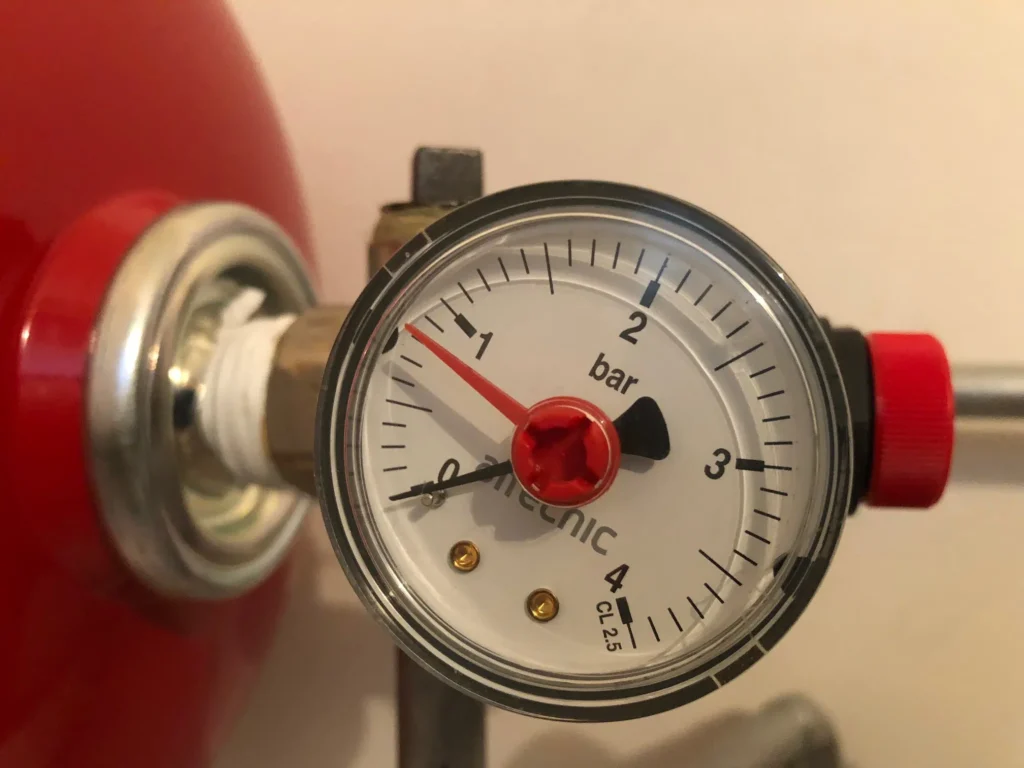
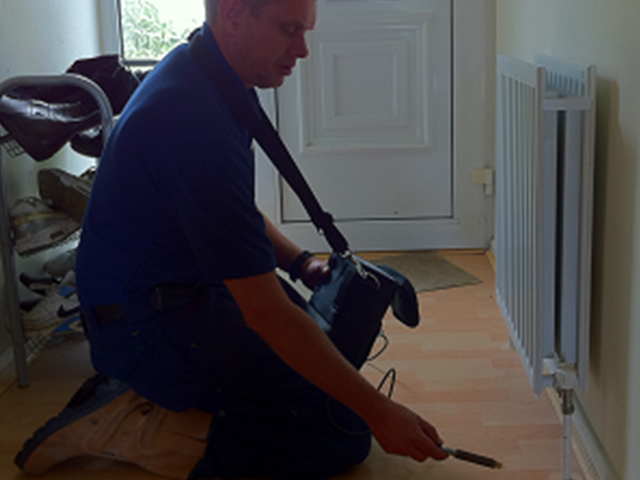
Imagine a magical way to find a leak in your central heating system without any inconvenience or mess. Well, tracer gases are here to save the day! This non-invasive technique involves draining the heating system and filling it with a completely safe and non-toxic mix of gases. Then, a super-sensitive probe is gently moved along the pipework that runs throughout your home. As the gas escapes through any tiny cracks, the probe detects it and pinpoints the exact location of the leak. But here's the really fascinating part: the gas particles are so small that they can rise up through wood, carpet, tiles, and even concrete! This means we can efficiently locate the leak without causing any disruption or damage to your beloved abode. Isn't that amazing?
So, say goodbye to the days of tearing up your floors or walls to find a pesky leak. With tracer gases, we make the process seamless, hassle-free, and dare we say, a bit magical. Trust us, your home will thank you for it!
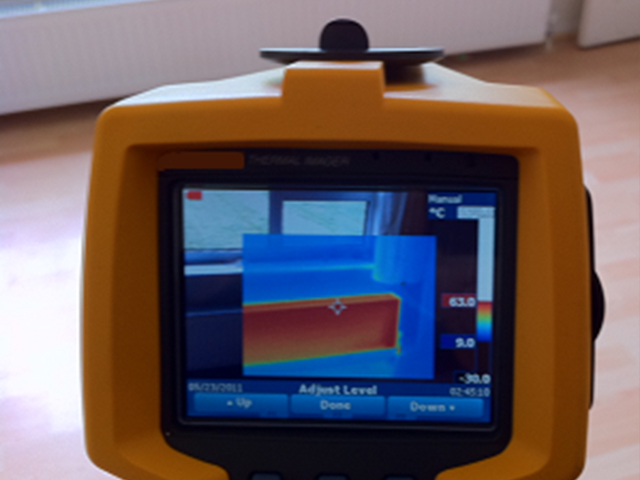
Discovering central heating leaks has become a breeze with the help of thermal imaging. We employ a cutting-edge camera that captures the thermal energy emitted by the pipes. This remarkable technology allows us to pinpoint the location of hidden central heating pipes lurking beneath floors and inside wall cavities, as well as detect the source of the leak. By detecting slight temperature variations caused by water leaks, our thermal imaging camera captures images that reveal these abnormal temperatures. This invaluable tool works hand in hand with other leak detection techniques, empowering our engineers to identify the precise locations of concealed pipes in your home. With this knowledge, they can embark on their search with confidence.
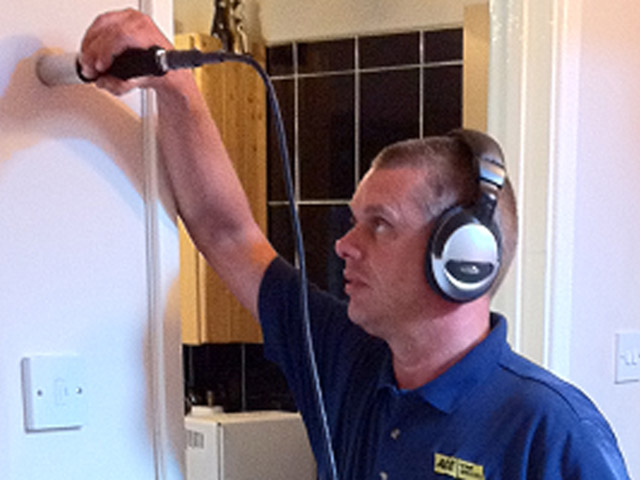
We've got this amazing device called an acoustic microphone. It's super sensitive and can pick up the sound of a leak escaping from a pipe. You see, every water leak, no matter how big or small, creates noise. Our clever acoustic listening devices are designed to detect and amplify these noises for our brilliant engineers to analyze. And here's the cool part - we can actually pinpoint the exact location of the leak! How, you ask? Well, we use two listening devices at the same time to triangulate where the sound is coming from. By calculating the distance between each microphone and the noise, we can figure out exactly where that pesky leak is hiding. This nifty technique is especially handy for those hard-to-reach pipes buried deep under floors or concealed inside insulated walls.
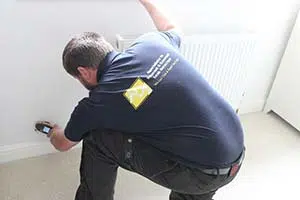
Discover the magic of moisture meters! These incredible devices are designed to check the moisture levels on various surfaces. Our talented engineer will gracefully glide through your home, carefully taking readings wherever central heating pipes grace your property. They will also pay special attention to the majestic boiler, ensuring that no area with higher levels of moisture goes unnoticed. By pinpointing the source of any water leaks, we can save the day!
Sometimes, certain materials pose a challenge for our moisture meters. Fear not, for we have a solution! In rare cases, we may need to perform a tiny drilling expedition to obtain more accurate readings from beneath the surface. Rest assured, this method is gentle and minimally invasive, causing only the slightest disturbance.
Moisture meters make the task of detecting central heating leaks an enchanting experience. Trust in our expertise, and let us work our magic to keep your home dry and cozy!
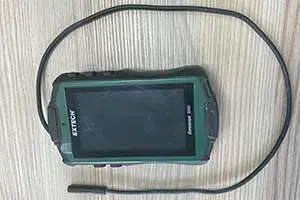
Step into the world of borescopes, the incredible inspection cameras that offer a whole new perspective. With their flexible tube, equipped with a powerful light source and a camera on the end, these cameras capture high definition images and videos in real time. It's a visual feast for the operator! But that's not all – these innovative devices are specifically designed to explore the unexplored. From the hidden spaces inside walls to the mysterious depths beneath floors, borescopes fearlessly venture into the most confined areas. Their mission? To hunt down any signs of water leaks and save the day!
Now, you might be wondering how this magic works. Well, it's simple. If there's no easy access point, a small hole is drilled into the area that needs inspection. Don't worry, though – the borescope is as slim as can be, with a diameter of just 6mm. That means the drilled hole is tiny, barely noticeable. And here's the best part – it can be easily repaired, leaving no trace behind. It's like the borescope was never there, erasing any evidence of its exploration.
So, grab a seat and join the borescope adventure. Discover the hidden secrets of unreachable spaces, all while enjoying the incredible visuals and peace of mind that this ingenious device brings.
Well, there are these Central Heating leak sealants claiming to be a quick fix for finding and fixing leaks in pressurized systems. But hold on tight, because they’re never as effective as actually dealing with the problem.
Here’s the thing, leak seal is not an exact science. Sure, it might sort of fix the leak, but it could also get all tangled up with rust and corrosion, causing even more problems. There have been cases where sealant has actually made things worse, leading to repairs needed in other parts of the system.
So, don’t get tempted by a sticky-plaster approach to a problem that can seriously mess up your property.
The price actually varies depending on the type of property we are dealing with. As you can probably guess, it is usually easier to find a leak in a regular home compared to a huge commercial building.
Virtually all building insurance policies cover ‘Trace and Access’ for central heating leaks – so any charge will usually be refunded to you. What’s more, we have partners who are on hand to help you deal with any related insurance claim – so you don’t need to worry about the paperwork or phone calls involved.
We know better than anyone that being in a home with a leak, no heating, and no hot water is stressful enough; so we’ll make sure you’re helped with every step – we’ll even ensure you’ve got all the reports you need to support your insurance claim.
If you think there’s a leak in your central heating system, acting fast is the key to keeping your costs down.
Get in touch with us now by calling 01582 448472 . You’ll speak to a friendly and knowledgeable member of the team who’ll help you deal with your central heating leak today.
We serve the whole of Luton, Bedfordshire including all villages in the area.
Privacy Policy | Terms & Conditions | Sitemap | Registered Office Address: 128 City Road, London, United Kingdom, EC1V 2NX